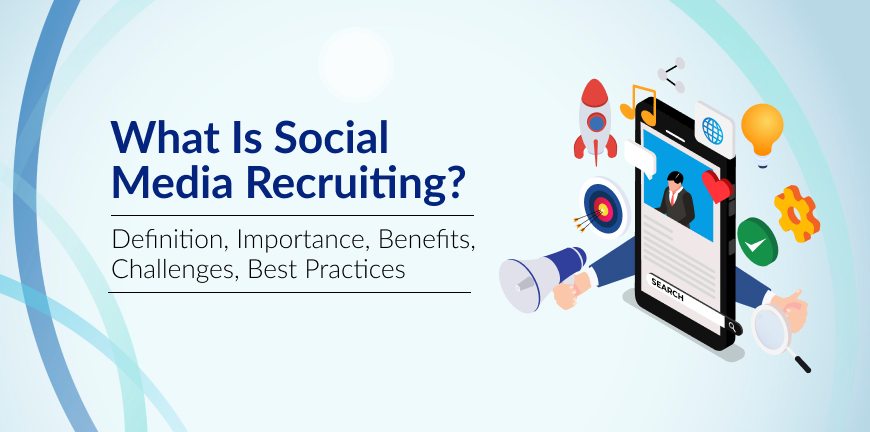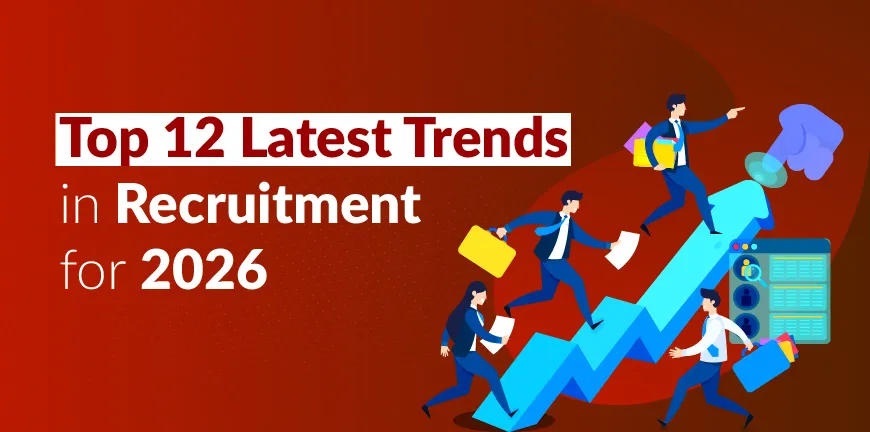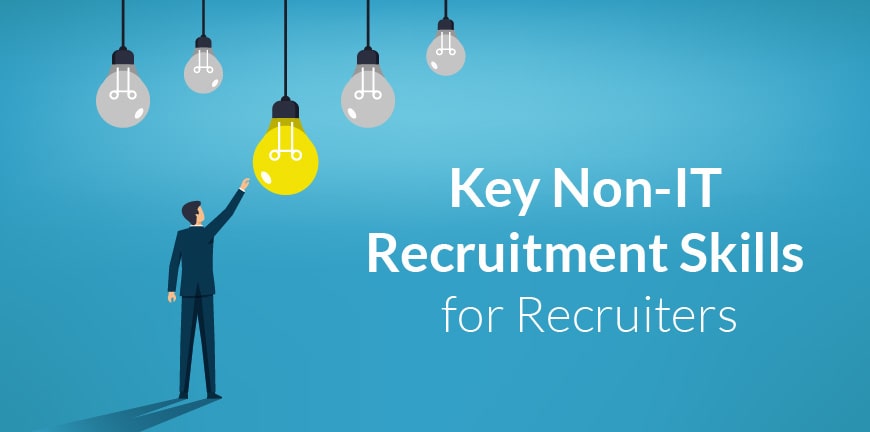
Future-Ready Talent: Critical Skills Defining Recruitment in 2025
21/05/2025
CV vs. Resume: A Comprehensive Guide [2025]
21/05/2025Social media has become an integral part of everyone’s life and searching for jobs is no exception. Nearly 98% of employers are using social media recruiting methods for scouting top talents across different domains. Also, 98% of job seekers are using various social media platforms for passive and active searches for their dream jobs. But how does social media recruiting work in reality? Let’s find out through a detailed analysis.
What Is Social Media Recruiting?
There are different methods of sourcing and recruiting top talents to fill vacant positions, and social media recruiting is regarded as the most trending one. The social media recruiting definition states that “Any job seeker or an employer can share their job requirements on social media platforms and create a mutual connection which can materialise into interview and eventual hiring creating win-win situation for both job seekers and employers.”
A social media recruitment process various steps to hire and onboard suitable candidates with the help of platforms like LinkedIn, Instagram, Facebook, Twitter, and many more. The social media recruitment strategy template is ideal for selecting both active and passive candidates for most businesses and industries.
Why Is Social Media Recruiting Important?
Nowadays, most users prefer social media platforms to gather information and job postings are no exception. As per the popular job board and review platform Glassdoor, nearly 79% of job-seeking candidates are using social media platforms like LinkedIn and Instagram to look for matching jobs.
Additionally, around 73% of users who are actively looking for a job change through social media platforms are in the age group of 18-34 years. Moreover, the quality of the hire sourced from social media recruiting techniques is much higher when compared to traditional recruiting methods. Some of the key reasons that make social media recruiting vital for increasing source-to-hire rates include:
- Millennials between the age of 18-30 are heavily invested in social media and hence search for job postings along with regular entertainment.
- Social media post increases a job listing’s reach and visibility.
- Quality of hire is much better since recruiters and candidates can have multiple interactions to understand each other’s requirements and make informed decisions.
- The cost per hire also reduces with the use of social media in recruitment and selection.
Key Benefits of Social Media Recruiting
Most recruiters in the current job market landscape are considering social media recruiting as a go-to recruitment approach due to the numerous perks it offers when compared to conventional hiring methods. The key benefits of social media recruitment include:
1. Create a wide pool of passive candidates.
Usually, job portals have candidate profiles that are actively seeking jobs. However, through social media recruiting tools, HR professionals can create wide talent pool of passive candidates who might be the best fit, but currently not available for joining due to several reasons.
2. Generate more referrals
Internal employees or users of social media platforms can share job postings directly with interested candidates or share them as posts or stories on their individual social media accounts. This will help the HR team generate more referrals and reduce the burden of vetting thousands of profiles through job portals.
3. Ability to narrow down the search
The impact of social media in recruitment is such that recruiters gain the ability to narrow down their search and find candidates that perfectly match the JD (job description) through search filters.
4. Create awareness of your company’s work culture and core values.
Companies whether a startup or a market leader are using social media extensively for promoting their brand vision and work culture through regular posting of useful content that include job postings, employee reviews, client testimonials, videos and images of activities and events, etc. This will attract potential candidates and increase the hiring and retention rates.
5. Saving costs
The most cost-effective ways of sourcing and recruiting candidates is social media recruitment process. Since most features on social media platforms are free to use, employers can promote their brand and create a talent pool of passive and active candidates with little to no investment.
How Does Social Media Recruiting Work?
The vital steps involved in the social media recruitment process include:
1. Define your recruitment goals
Set concrete objectives and materializable for using social media in recruitment and selection. The goals can be creating brand awareness, increasing the number of job applications, developing a passive talent pool, improving engagement with potential candidates, etc. Additionally, identify KPIs (key performance indicators) that can used as metrics of success. Ex: Post engagement, number of applications received, etc.
2. Choose the right social media recruiting tools and platforms
Choose the social media platforms that can provide maximum engagement based on your industry type and target audience. Currently, LinkedIn and Instagram seem to the most preferred social media engagement platforms for job seekers and recruiters.
3. Post Relevant content
The most essential social media recruiting strategy for generating higher traction is to post engaging content that is targeted towards passive and active job seekers. Along with job postings, add relevant content such as employee stories, achievements, client testimonials, reviews, current trends, etc. This increases engagement and enhances employer branding attracting top talents to reach out for upcoming job openings. Also, ensure company’s brand voice is consistent across all the social media platforms.
4. Engage with Audience
Use social media recruiting techniques to engage with potential candidates. Send personalized messages to potential candidates and start a two-way communication to increase engagement. Invite applications from passive and active candidates and once applications are received, provide prompt reply if you are going ahead with the next stage of recruitment or not considering the application.
5. Measure and optimise the results
The HR team must use various social media recruiting tools such as analytics to measure the results of the recruitment efforts. Based on the KPIs, optimise your social media recruiting strategy and process to improve outcomes.
Challenges of Social Media Recruiting
The major challenges that can be considered disadvantages of using social media for recruitment include:
- The candidate’s profile on their social media profile may be incomplete or not updated making it challenging for the recruitment team to make informed decisions for the next stages of hiring.
- It can create a confirmation bias for recruiters based on the potential candidate’s posts and engagement methods.
- It can be time-consuming to vet profiles since thousands of applications may be received across the country that might or might not match the requirements.
- Maintaining the brand reputation of a company on social media platforms can be challenging since one bad move can create a PR nightmare.
- It is extremely challenging to stand out on social media both as recruiter and job seekers as it is based on content quality and algorithms.
- Each platform needs a different social media recruiting strategy making it complex for recruitment team to adapt and achieve success.
Best Practices for Social Media Recruiting
The best practices using social media recruitment strategy include:
1. Build a strong online presence
Companies must build a strong online presence through effective branding strategies and relentless engagement through a dedicated social media recruitment team consisting of expert social media recruiters, social media managers, social media, Social Media Optimization (SMO) specialists, content creators, etc.
2. Network with the right set of audience
Once you have increased followers, create posts and other content that offer personalisation rather than just generic stuff. use social media recruiting tools and features to create to narrow your search and find candidates and create engagement for better hiring rates.
3. Use Hashtags Effectively
Hashtags are a great way to increase reach and engage the target audience. Use the right amount of hashtags that are relevant in all your social media posts. Interesting and meaningful content paired with hashtags can be a game changer.
4. Blend professionalism and fun
Keeping it professional on social media platforms is important but adding fun elements along with it can make a huge difference in creating more engagement. Post fun videos, images, gifs, etc., that showcase the lighter side of the company’s work culture to create a vibe that we work hard but also have fun along with it.
5. Post Regularly
Being proactive and posting regularly on social media is critical for the success of social media recruiting efforts. Potential candidates will be following the pages of companies they are interested in being a part of and regular updates will help them to more informed and may result in them approaching for a job opportunity or engage as passive candidate.
Are You looking Recruitment Partner?
Managing the social media recruiting team in-house can be challenging and increases costs. Also, the social media recruitment process requires specific expertise like understanding analytics, posting new and unique content regularly, constant candidate engagement through social media platforms, etc. The internal HR team may not have sufficient time or resources to achieve the desired results through the social media recruiting method. ALP Consulting, a leading HR company in India offers end-to-end social media recruitment services for small, medium and Fortune 500 companies. The advantages of social media recruitment through ALP include:
- Higher ROI.
- Creation of a wide talent pool of passive and active candidates across different sectors.
- Expertise in social media recruiting techniques across different platforms like LinkedIn, Instagram, Facebook, etc.
- Reduced time-to-hire.
- Quality hire across various domains.
Frequently Asked Questions
1. What is social media recruiting?
It is an effective approach of scouting and shortlisting top candidates to fill regular and niche job positions using social media platforms such as LinkedIn, Instagram, Twitter, etc.
2. What are the risks of social media recruiting?
The disadvantages of social media recruitment include confirmation bias, reliability of information shared on social media platforms, higher chances of receiving applications not matching the job description, etc.
3. How do recruiters use LinkedIn for talent acquisition?
LinkedIn is a popular social media job search platform offering social media recruiting tools for recruiters to engage and hire top talents across different sectors. Features such as advanced search and filtering, connection requests, ATS, referral programs, etc., help recruiters to find best-fit talents for their organisations.
4. What tools help with social media recruiting?
The social media recruiting tools that support recruiters find and hire the best talents are social media platforms like Instagram, Linked In, Twitter, etc., search filters based on job type, location, experience level, etc., direct messaging tools for communication, connection request options, posting content features, and many more.
5. How can you engage passive candidates on social media?
Creating a passive talent pool is crucial for maintaining a continuous flow of candidates for filling up required positions without last-minute struggles. For effective engagement, recruiters must build a long-term relationship with constant engagement, highlight company’s culture, share employee stories, etc.
Contact Us For Business Enquiry

Amit Saproo
Amit Saproo is the Head of Operations at ALP Consulting with nearly 17 years of experience in Executive Search, RPO, Leadership, and IT & Engineering recruitment. He leads nationwide recruitment programs across Technology, BFSI, and R&D domains, driving strategic hiring solutions for diverse client needs. Amit excels in building and managing high-performance teams that deliver scalable, end-to-end recruitment and consulting services.




